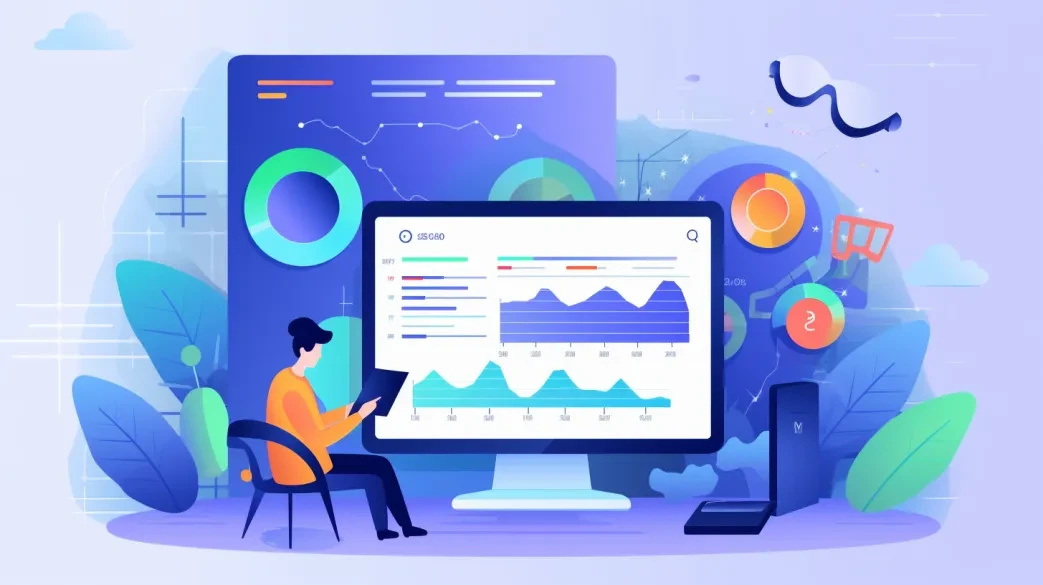How Good is Shopify SEO? Boost Your Traffic and Sales [2023]
Ever felt like you’re gambling on a roulette wheel when picking an e-commerce platform? Yes, it’s that gut-churning “Did I bet on the right number?” moment.
You’ve got your chips on Shopify, but a nagging voice whispers, “Is its SEO game strong enough to bring in the big bucks?” You’re not alone in that thought, trust me.
Picture this: you’re staring at your screen, Shopify dashboard up. And there’s that tiny, pesky doubt eating at you – will my store climb the Google ladder? Or is it just going to blend into the abyss of the internet?
It’s like standing at the edge of a high dive, wondering if the water’s fine or if you’re about to belly-flop.
But here’s the deal – you’re about to dive into the nitty-gritty of Shopify SEO and come out the other side with a clear head and a solid plan.
We’re talking traffic that doesn’t just trickle but flows, and sales that don’t just ding but ka-ching! Let’s buckle down and get started, shall we?
Unlock Shopify's SEO Potential in 2023
Alright, let’s dive right into the meat of Shopify SEO and why it’s got everyone talking. You’ve probably heard the buzz about Shopify’s SEO capabilities, but let’s break it down, shall we?
When we talk about Shopify SEO, we’re not just throwing around fancy jargon. We’re talking about Shopify’s built-in tools that help your store pop up in search results like a jack-in-the-box.
But it’s 2023, folks – the game has changed.
Google’s smarter, customers are savvier, and Shopify? Well, it’s been keeping up with the times, automatically generating sitemaps and fixing broken links like a pro.
![How Good Is Shopify Seo? Boost Your Traffic And Sales [2024] how good is shopify seo](https://digi-business.co.uk/wp-content/uploads/2023/11/unlock-shopify-seo-potential.webp)
What is Shopify SEO?
Imagine you’ve got a billboard in the desert. That’s your store without SEO. Shopify’s SEO is like moving that billboard to Times Square or Trafalgar Square on New Year’s Eve – suddenly, you’re in the spotlight.
It’s all about making your store the main event in search result listings.
Shopify has all the basic functions you’d expect to see in many content management systems (CMS) or ecommerce platforms.
Shopify includes the normal meta tags for titles, descriptions, and alternate text for each page as an example.
An element of Shopify’s SEO features that shouldn’t be overlooked is its tags. Tagging product pages is something that can be found on a variety of content management systems, such as WordPress.
Although using it properly on Shopify is key for optimal site performance, this feature can have a profound effect.
The Evolution of SEO on Shopify
Back in the day, SEO was like trying to solve a Rubik’s cube in the dark. Now, Shopify offers tools that are like flipping on the light switch.
It’s not just about keywords anymore; it’s about the whole shebang – from image optimisation to making sure your category pages aren’t just present but shining.
There are many apps (or plugins) to help optimise your site, which are intuitive, good value, and effective.
Shopify's SEO Tools: Your Digital Spotlight
Now, let’s get down to brass tacks and talk features. Shopify’s SEO strategy isn’t just a one-trick pony; it’s more like a Swiss Army knife.
Shopify SEO Features: The Good and the Glitch
Shopify’s like that friend who’s always got your back, automatically generating SEO goodies that you didn’t even know you needed. We’re talking XML sitemaps, canonical tags, and the whole nine yards.
Pros of Shopify SEO
Here’s the scoop: Shopify’s SEO tools are like having a GPS for the internet highway. They guide your store to the top of search results, making sure you’re seen by folks who are itching to buy what you’re selling.
Cons of Shopify SEO
But hey, nobody’s perfect, right?
Sometimes Shopify can be a bit of a control freak, not letting you tweak every SEO setting. For instance, you can’t edit the sitemap it automatically generates, which can be a bit of a bummer if you’re a control enthusiast.
![How Good Is Shopify Seo? Boost Your Traffic And Sales [2024] Shopify SEO tools](https://digi-business.co.uk/wp-content/uploads/2023/11/Shopifys_SEO_Tools_Your_Digital_Spotlight.webp)
Shopify's SEO Tools: Your Digital Spotlight
Now, let’s get down to brass tacks and talk features. Shopify’s SEO strategy isn’t just a one-trick pony; it’s more like a Swiss Army knife.
Shopify SEO Features: The Good and the Glitch
Shopify’s like that friend who’s always got your back, automatically generating SEO goodies that you didn’t even know you needed. We’re talking XML sitemaps, canonical tags, and the whole nine yards.
Pros of Shopify SEO
Here’s the scoop: Shopify’s SEO tools are like having a GPS for the internet highway. They guide your store to the top of search results, making sure you’re seen by folks who are itching to buy what you’re selling.
Cons of Shopify SEO
But hey, nobody’s perfect, right?
Sometimes Shopify can be a bit of a control freak, not letting you tweak every SEO setting. For instance, you can’t edit the sitemap it automatically generates, which can be a bit of a bummer if you’re a control enthusiast.
Actionable SEO Strategies for Shopify
Let’s roll up our sleeves and get into the nitty-gritty of how you can jazz up your Shopify store’s SEO.
Mastering Keywords: Your SEO Secret Code
Think of keywords like the secret handshake to get into the cool kids’ club – the club being the first page of search results. You’ve got to know the right words to get in.
Google Search Console
Dive into the treasure trove that is Google Search Console, your map to the stars in the SEO universe.
It’s the backstage pass to understanding how Google views your Shopify store, and it’s where you’ll get the lowdown on your site’s performance straight from the search engine’s mouth.
![How Good Is Shopify Seo? Boost Your Traffic And Sales [2024] Actionable SEO Strategies for Shopify](https://digi-business.co.uk/wp-content/uploads/2023/11/Actionable_SEO_Strategies_for_Shopify-1024x574.webp)
On-Page Tactics: Sharpen Your Shopify’s Appeal
On-page SEO is like your store’s handshake – it needs to be firm and confident. That means sprucing up your product pages with the right keywords and making sure your blog posts aren’t just fluff. But packed with useful info that Google and your customers love.
Product Descriptions
Craft product descriptions that don’t just talk; they sing. Infuse them with your target keyword to make them irresistible to search engines. It’s like dressing your products in their Sunday best, ready to catch the eye of both Google and your customers.
Target Keyword
Your target keyword is the secret handshake between your store and potential customers. Weave it into your content with the finesse of a master storyteller, ensuring it appears in all the right places without overwhelming the narrative.
301 Redirects
Think of 301 redirects as the traffic cops of your Shopify store, guiding visitors from outdated URLs to the shiny new pages you want them to see. They keep your site’s flow smooth and seamless, preserving the SEO juice and keeping user frustration at bay.
Page Titles
Your page titles are the billboards of the digital highway. Make them pop with your target keyword and watch as they grab attention and signal to search engines what your page is all about. It’s about making a first impression that lasts and leads to clicks.
Image Optimization
Don’t let your images be just pretty faces. With image optimisation, they can be speed demons, loading in the blink of an eye and keeping your site quick on its feet. It’s like putting your images on a diet, so they flex their visual muscles without the heavyweight.
Image Alt Text
The alt text for your images is like a whisper in the ear of search engines, telling them the story of the image. It’s an SEO opportunity that’s often overlooked but can be the difference between invisibility and a spotlight on your site’s performance.
Technical SEO: Fine-Tuning Your Online Machine
This is where you check under the bonnet and make sure everything’s running smoothly. It’s about making sure your site’s structure is as easy to navigate as a straight line and that your internal linking makes sense, like a well-planned city grid.
Advanced Shopify SEO Tactics
![How Good Is Shopify Seo? Boost Your Traffic And Sales [2024] digital marketing expert working on their Shopify website](https://digi-business.co.uk/wp-content/uploads/2023/11/digital-marketing-expert-working-on-their-Shopify-website.webp)
Ready to go from SEO newbie to expert? These advanced tactics are your nunchucks and throwing stars.
Shopify SEO Apps: Automate Your Way to the Top
Shopify’s app store is like an all-you-can-eat buffet for SEO. Apps like Smart SEO can help you automate image optimisation, manage structured data, and avoid the dreaded duplicate content.
Link Building: Forge Digital Alliances
Link building is like making friends in high places. The more reputable sites that link to your store, the more Google thinks you’re the bee’s knees.
Content Power: Fuelling SEO with Value
Content is king, queen, and the royal court when it comes to SEO. Your blog posts should be like a magnet, drawing in visitors with their value and keeping them coming back for more.
SEO Pitfalls: Navigate Away from Common Blunders
Even the best of us can trip up sometimes. Here are some common face-palms to dodge.
Duplicate content is like wearing the same outfit to two parties in a row – it’s a no-go. Make sure every page on your store is unique and fresh.
Broken links are like dead ends on the road to success. Check your links often to make sure they’re all leading somewhere fantastic.
Measuring Your Shopify SEO Success
![How Good Is Shopify Seo? Boost Your Traffic And Sales [2024] measuring your shopify seo success](https://digi-business.co.uk/wp-content/uploads/2023/11/measuring-your-shopify-seo-success.webp)
If you’re not measuring it, did it even happen? Here’s how to keep tabs on your SEO success.
Analytics: Your SEO Performance Lens
Google Analytics is like a crystal ball for your store. It lets you peek into the future by analysing the past and present. Set it up to see how your SEO efforts are paying off in organic traffic.
SEO Metrics to Track: Understanding User Engagement
Keep an eye on your metrics like a hawk. They’ll tell you what’s working and what’s as useful as a chocolate teapot.
Users
When it comes to SEO, knowing your audience isn’t just beneficial; it’s crucial. The ‘Users’ metric represents the lifeblood of your website—real people who have clicked through to your Shopify store.
Tracking users over time gives you a clear picture of your store’s growth and the reach of your SEO efforts. It’s like keeping an eye on the crowd size at your own digital concert, making sure the audience keeps coming back for more.
Sessions
A ‘Session’ is a single visit to your store, encompassing all the interactions that might occur within that visit. Think of each session as a shopping trip; a customer can have multiple trips, and each one is an opportunity for them to engage with your brand.
Examining session information can help you measure the attraction of your material. And the efficiency of your SEO in bringing in potential customers to your digital platform.
Engaged Sessions
Not all visits are created equal. ‘Engaged Sessions’ are those where users show genuine interest by interacting with your site beyond a cursory glance. This could mean reading a blog post, browsing product pages, or using the search function.
It’s the difference between someone window shopping and someone trying on the clothes. Engaged sessions are a testament to the compelling nature of your content and the user experience you provide.
Average Engagement Time per Session
This metric is the average time users spend actively engaged on your site during a session. It’s a powerful indicator of how captivating and relevant your content is. Are they quick sprints through your store, or are they leisurely strolls?
The longer the engagement time, the more likely that users are to find value in what you offer. It’s like measuring the length of conversations at a party; the longer they linger, the better the company.
Future-Proofing Your Shopify SEO
SEO is always on the move, but with these tips, you’ll be two steps ahead.
Stay Updated with SEO Trends
Stay on top of SEO trends like you would the latest Netflix series. You wouldn’t want to miss the next big thing, would you?
Preparing for Voice Search and AI in SEO
Voice search and AI are like the new kids on the block, and they’re here to play. Make sure your store’s ready to welcome them.
Alright, let’s keep the momentum going and dig a bit deeper into the world of Shopify SEO. You’re not just playing the game; you’re mastering it.
![How Good Is Shopify Seo? Boost Your Traffic And Sales [2024] how good is shopify seo](https://digi-business.co.uk/wp-content/uploads/2023/11/Future-Proofing-Your-Shopify-SEO.webp)
Synergize: Merging SEO with Your Marketing Beat
SEO isn’t a lone wolf; it’s part of a pack. Integrating it with your overall marketing strategy is like assembling a supergroup – every element amplifies the others.
Multi-Channel SEO
Think of your marketing channels as a rock band. SEO is the lead singer, for sure. But it needs the support of the drums (social media), the bass (email marketing), and the guitar (paid ads) to make sweet, sweet music.
Branding and SEO
Your brand story should sing through your SEO. It’s not just about getting found; it’s about being remembered. When your brand’s voice echoes in your SEO strategy, you’re not just a drop in the ocean; you’re the wave.
UX: Crafting a Welcoming Digital Home
Ever walked into a store and just felt…at home? That’s UX in the digital world. It’s the warm welcome, the easy-to-navigate aisles, and the helpful staff that make you want to stay awhile – and come back soon.
The Role of UX in SEO
Google loves a site that users love. If your Shopify store is the digital equivalent of a cosy coffee shop where everyone knows your name, Google’s going to want to hang out there too.
Best UX Practices for Shopify Stores
Responsive design isn’t just a buzzword; it’s your store’s ability to shape-shift to fit any screen. It’s like being the social chameleon at the party, fitting in with any crowd, be it desktop devotees or mobile mavens.
![How Good Is Shopify Seo? Boost Your Traffic And Sales [2024] Synergize: Merging SEO with Your Marketing Beat](https://digi-business.co.uk/wp-content/uploads/2023/11/Synergize-Merging-SEO-with-Your-Marketing-Beat.webp)
Local SEO: Be the Talk of Your Town
If you’ve got a brick-and-mortar presence, local SEO is your secret weapon. It’s like putting up billboards in your own backyard – it makes sure your neighbours can find you.
Importance of Local SEO for Physical Stores
Local SEO is like the hometown cheerleader for your physical store. It roots for you in the local search results, making sure the community knows you’re there and you’re awesome.
Leveraging Shopify for Local Business Growth
Shopify’s got tools that make local SEO as easy as pie. Think of it as your local SEO sous-chef, prepping everything you need to serve up your store to local searchers.
Accessibility: Open Doors for All Online Visitors
The internet’s for everyone, and your store should be too. Accessibility and inclusive design are like the open-door policy of the web world.
Making Your Shopify Store Accessible
Imagine your Shopify store is a party. You wouldn’t want anyone to feel left out because they couldn’t get through the door, right? That’s what accessibility is all about – making sure everyone’s invited.
Inclusive Design and SEO
Inclusive design doesn’t just open doors; it rolls out the red carpet. It’s about creating an experience that’s welcoming to all, and guess what? Search engines eat that up.
Security and Trust Signals
In the wild west of the internet, your store needs to be the sheriff – the beacon of safety and trust.
Security: Building Trust in the Digital Age
SSL certificates and secure payment gateways are your store’s badge and gun. They tell customers, “You’re safe here,” and that’s a message that resonates far and wide.
Implementing HTTPS and Secure Payment Gateways
Secure payment options are like the armoured trucks of e-commerce. They make sure your customers’ purchases are as safe as gold in a vault, and that’s a surefire way to win the trust shootout.
Mobile First: Winning the On-the-Go Audience
Mobile optimisation is no longer optional; it’s as essential as the air we breathe – at least in the digital marketing world.
The Importance of Mobile-First SEO
With more people browsing on their phones than ever, a mobile-friendly site is like having a store in every pocket. If your site’s not responsive, it’s like having a “Closed” sign up for half of your potential customers.
Testing and Improving Mobile Usability
Tools for testing mobile usability are like your store’s personal trainers. They put your site through the paces, making sure it’s in tip-top shape for the mobile marathon.
![How Good Is Shopify Seo? Boost Your Traffic And Sales [2024] how good is shopify seo](https://digi-business.co.uk/wp-content/uploads/2023/11/Mobile_First_Winning_the_On-the-Go_Audience.webp)
Customer Insights: The SEO Feedback Goldmine
The voice of the customer is the compass that guides your SEO ship. Listening to their feedback is like having a direct line to their thoughts and desires.
Collecting Customer Feedback
Gathering feedback is like hosting a town hall meeting. You get to hear straight from the folks who matter most – your customers.
Using Feedback to Inform SEO Adjustments
When you use customer feedback to tweak your SEO, it’s like custom-tailoring your store to fit the customer perfectly. It’s not guesswork; it’s precision engineering.
Algorithm Agility: Future-Proof Your SEO Strategy
Search engines are fickle beasts, always changing their minds about what they like. Staying ahead of algorithm updates is like being a meteorologist for the web – you’ve got to predict the changes before they happen.
Understanding Search Engine Algorithms
Getting to grips with search engine algorithms is like learning a new language. It might seem daunting, but once you’re fluent, you’ll be chatting up Google like an old friend.
Staying Agile with SEO Strategies
SEO isn’t set-it-and-forget-it; it’s more like a game of Twister. You’ve got to stay flexible, ready to shift your strategy with the ever-changing landscape.
And there you have it – a comprehensive guide to making Shopify SEO work for you. Remember, it’s about being smart, staying agile, and always putting the customer first.
Seize the SEO Horizon
You’ve been at this screen for a while, haven’t you? Eyes scanning, brain whirring, piecing together this SEO puzzle for your Shopify store. It’s like prepping for a marathon, with the finish line being that sweet spot on Google’s page one.
You’re probably thinking, “Can I really do this? Is my store going to see that traffic and sales spike?”
Absolutely, you can. You’ve just armed yourself with a treasure trove of SEO smarts. Those shiny new strategies, tactics, and tools that are going to set your store apart.
Imagine your site, once a hidden gem, now sparkling in the sunlight of Google’s first page.
Picture the streams of visitors, not just passing through, but staying, shopping, returning.
That’s the power of action, of applying what you’ve just learned.
Think of the possibilities that lie ahead. Your store, a beacon of findability, a hub of activity, a testament to your hard work and savvy moves in the SEO game.
You’re not just chasing the algorithm anymore. You’re dancing with it, leading the charge with responsive design, killer content, and a user experience that turns visitors into fans.
Feel that? That’s the thrill of potential, the electric buzz of what’s to come. It’s the dawn of a new day for your online business, and you’re the one holding the sun.
So, take that step. Implement these insights. Watch as your store transforms from a whisper in the digital winds to a roar in the e-commerce jungle.
Stand tall, store owner. You’re not just playing the game. You’re redefining it. Now go out there and make your mark. The world’s waiting, and it’s your time to shine.
![How Good Is Shopify Seo? Boost Your Traffic And Sales [2024] How good is Shopify SEO?](https://digi-business.co.uk/wp-content/uploads/2023/11/seize-the-SEO-horizon.webp)
How Good is Shopify SEO? Your Questions Answered
How effective is SEO in Shopify?
Shopify’s SEO can be a game-changer, turning your store into a customer magnet. With the right moves, you can climb the search rankings and watch your traffic – and sales – soar. Learn more about Shopify’s SEO tools.
How SEO-friendly is Shopify?
Shopify rolls out the red carpet for SEO, offering a suite of user-friendly tools that make optimisation as smooth as silk. It’s like having an SEO coach built right into your store. Explore Shopify’s SEO features.
Is SEO difficult in Shopify?
Not at all! Shopify makes SEO as easy as pie, with intuitive settings and guides that take the guesswork out. It’s like having a GPS for the world of search engine rankings. Get started with Shopify SEO.
Are Shopify tags good for SEO?
Shopify tags can be SEO gold, helping to organise your content and make it more discoverable. It’s like putting a spotlight on your products for search engines to see. Maximise your tags for SEO.
Which SEO is better: WordPress or Shopify?
It’s a close call, but WordPress often takes the lead for SEO flexibility. However, Shopify holds its own with robust, built-in SEO tools perfect for store owners. Compare WordPress and Shopify’s SEO.
Is Shopify or Wix better for SEO?
Shopify edges out with its e-commerce focus, offering tailored SEO features for online stores. Wix is user-friendly, but Shopify’s tools are designed to sell, sell, sell. See why Shopify wins for SEO.
Do Shopify websites rank well?
Absolutely! With its SEO-friendly platform, Shopify websites can climb to the top of search results, basking in the limelight and pulling in the crowds. Boost your Shopify site’s ranking.
Is SEO worth it for ecommerce?
SEO is the bread and butter of e-commerce success. It’s what gets your store seen, visited, and shopped – a solid investment for any e-commerce venture. Invest in SEO for e-commerce growth.
Is Shopify more SEO-friendly than WooCommerce?
Shopify gives you SEO tools straight out of the box, making it a breeze for beginners. WooCommerce offers flexibility but requires more SEO legwork. Understand Shopify vs. WooCommerce SEO.
Is it hard to succeed with Shopify?
Success in Shopify isn’t just a dream; it’s a very real possibility. With dedication and savvy SEO, your store can shine bright like a diamond in the e-commerce sky. Learn the keys to Shopify success.
Is it hard to get sales on Shopify?
Not with the right strategy! Leveraging Shopify’s SEO and marketing tools can turn your store into a bustling marketplace. It’s all about smart, targeted efforts. Boost your Shopify sales.
Is it easy to be successful on Shopify?
With Shopify’s user-friendly platform and a sprinkle of SEO magic, success isn’t just easy; it’s inevitable. It’s like finding the express lane to e-commerce victory. Discover the path to Shopify success.
Does Google read Shopify tags?
Google’s bots read Shopify tags like a book, using them to understand and rank your store’s content. It’s like giving Google a map to your products. Optimise your Shopify tags.
How do I rank on Google with Shopify?
Ranking on Google with Shopify is all about SEO smarts – from keywords to quality content. It’s like tuning your store to sing in harmony with Google’s algorithms. Rank higher on Google with Shopify.
How do I create an SEO plan for Shopify?
Creating SEO plan for Shopify is a mix of art and science. Choosing the right keywords, crafting compelling content, and setting your site up for search engine success. Create your Shopify SEO plan.
Do Shopify websites rank well?
Shopify websites can dominate search rankings when you play your SEO cards right. It’s about making Google fall in love with your store, one click at a time. Climb the ranks with Shopify.
Is SEO worth it for e-commerce?
In the world of e-commerce, SEO is the ticket to visibility and sales. It’s an investment that pays dividends in traffic and conversions. Why SEO is a must for e-commerce.
Is Shopify more SEO-friendly than WooCommerce?
Shopify serves up SEO on a silver platter, making it a friendly choice for store owners who want to hit the ground running. WooCommerce is powerful but requires more SEO elbow grease. Shopify vs. WooCommerce: SEO showdown.
What is the success rate of SEO?
The success rate of SEO can be stellar when done right. It’s a long game, but with patience and persistence, it can turn your site into a star performer. Maximise your SEO success.










7 responses